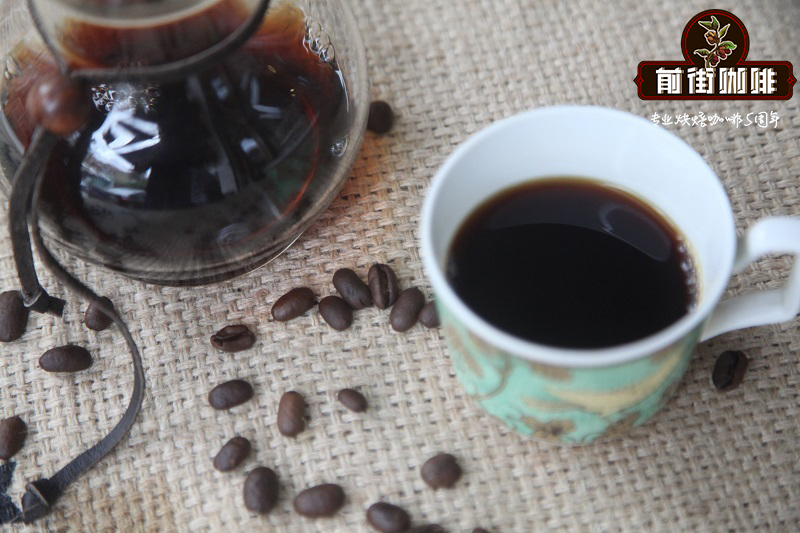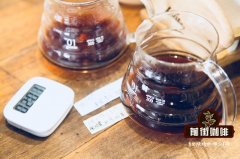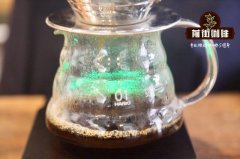What is the taste of coffee made by hand at Santa Maria Manor in Nicaragua? what do you pay attention to?

Professional coffee knowledge exchange more coffee bean information please follow the coffee workshop (Wechat official account cafe_style)
Introduction to the information story of St. Mary's Manor:
Santa Maria de Lourdes of Rhodes is located in Nueva Segovia, the most famous coffee producing area in Nicaragua, a few kilometers near the city of San Fernando (San Fernando), belonging to the Tibito / Dipilto Dipilto-Jalapa mountains. The forest is lush and the ecological environment is excellent. The farm is 1350-1550 meters above sea level, with an average annual rainfall of 1600-1800mm and a temperature of 18 °- 23 °C. St. Mary's Manor was acquired by Octavio Peralta in 1994 with the goal of producing the best quality coffee. 65 hectares of the estate is purely for forest conservation and 46 hectares grow coffee. The overall environment is excellent, as if it is a primeval forest and has been certified by tropical rain forest.
New West Govia, close to the Honduran border, is the best producing area in Nicaragua, and almost all of the top five of each extraordinary Cup are won by New West Gove. The Perata family has run farms in the Tibito Mountains since 1970, but the land has been plagued by war for years and has long been occupied by Sangding rebels. After the war calmed down, the family's coffee business gradually came back to life. at present, it has seven different farms, large and small, and they are also experimenting with different treatments. Saint Mary is one of the most famous, winning the Cup of Excellence Cup in Nicaragua five times, including 22nd place in 2007, 21st place in 2008, 6th place in 2009 and 19th place in 2014.
The varieties grown in Saint Mary are Kaddura (Caturra), red and yellow Catuai (Kaduai), and Java, a variety found locally in Nicaragua. Cherries are harvested manually and sent to two family-run processing plants for post-processing procedures.
Variety introduction of Huangkaduai Coffee:
Kaduai raw beans are relatively soft, sweet and sweet, sour less, as if everything is only 65 points, this is a variety promoted by Brazil, there is no big deal at present.
Kaduai is also an Arabica hybrid. It is a hybrid of Mundo Novo Mondonovo (New World) and Caturra Kaddura. It has a good ability to resist natural disasters, especially wind and rain. It inherits the advantages of Kaddura's low stature and changes Mondonwood's shortcomings. Another advantage is that the result is solid, and it is not easy to fall off when the strong wind blows, which makes up for the weakness of Arabica fruit, but the overall flavor is more monotonous than Kaddura, monotonous and less mellow, which is the greatest pity. In addition, the fruit growth and harvest life is only about ten years, and the short life span is also one of the weaknesses.
Kaduai also has the difference between Catuai Amerelo and Catuai Vermelho. The fruit is both red and yellow, but so far, no yellow fruit has been found to taste better than red fruit. On the contrary, some people have found that some yellow fruits have good acidity, but the cleanliness of coffee is worse than that of red fruit. Statistically, Hongguo Kaduai often wins prizes.
Because Kaddura has a large quantity and is not easy to suffer from diseases and insect pests, but the taste is not good and the flavor is not good, so based on Kaddura, a new Kaduai is derived to improve the disadvantage of poor taste and poor flavor, but it seems to be too balanced.
Introduction to Natural Process treatment:
Tanning is the oldest and most primitive treatment of coffee beans. The method of treatment is to first pour the harvested coffee fruit into a large trough, the ripe and full fruit will sink to the bottom of the water, while the underdeveloped or overripe fruit will surface. After these floating beans are shaved, the healthy coffee fruits are placed on the terrace to be directly exposed to the sun to dry, and the moisture is dried from 60% to 12%. Finally, the hard peel (Outer Skin) and pulp (Pulp) are removed by a sheller, and the whole treatment process of raw beans (Bean) is completed.
(↑ selects coffee fruits) (↑ drying in the open air)
Sun treatment can increase the flavor of berries and tropical fruits with mild acidity, but traditional sun treatment can sometimes produce negative flavors, such as soil, over-fermentation and so on.
Today, tanning is becoming popular again, even as one of the most important treatments for competition-grade coffee beans, and the change comes from the use of improved African viaducts. In addition to avoiding the moisture, animal manure and land smell on the ground, the elevated shed also keeps the fruit in a good air convection environment, making the drying effect more uniform, and farmers will turn it regularly to make the coffee beans gently absorb the sweetness of the pulp and make the flavor fuller and fuller.
Baking suggestions / Analysis:
Recommended brewing equipment: hand punching, pressure, siphon
Cooking analysis:
Today, we introduce the common method of making Nicaraguan coffee by coffee hands in front street: V60 three-stage water injection method.
Extract by stages, pour all the cooking water into three stages.
Suitable for light, medium and medium roasted coffee beans
Use filter cup V60 cup
Increasing the steaming time or water cut-off times can improve the rich taste of the coffee.
Segmented extraction method of three-stage water injection
Advantages: it is richer than the one-knife flow, and can clarify the flavor of the front, middle and back of the coffee. The method is to increase the amount of water injection each time after steaming, usually when the coffee liquid is about to drop to the surface of the powder layer, and use small, medium and large water flow to do three-stage extraction.
Disadvantages: there will be relatively high requirements for the flow rate and flow rate of water.
Qianjie [Nicaraguan Coffee hand Punch Parameter proposal]
Brewing with V60 filter cup can improve the hierarchical sense of hand flavor, drink more rich and clean, and show incisively and vividly the rich flower and fruit aroma and soft fruit acidity of Nicaraguan coffee.
15g powder, water temperature 89-90 degrees, grinding BG 5R (64% pass rate of Chinese standard 20 sieve), water powder ratio close to 1:15
Technique: steaming with 30g water for 30s. The hot water in the hand flushing pot draws a circle clockwise with the center of the filter cup in the middle of the filter cup, starts the time when brewing, injects water to 30g, then stops the injection and waits for 30 seconds to inject water for the first time.
When the first water injection is the same as before, the speed can be slowed down slightly, speed up a little when you go around the outer circle, cut off the water at about 1:15 seconds, and then inject water again when the liquid level drops 1 inch 3. The second water injection is concentrated on the central water injection. The water flow should not rush to the place where the coffee powder is connected with the filter paper, so as not to produce channel effect. Finish the extraction at about 2:05 seconds, and the longer the time is, the longer the extraction can be done. The astringent and rough taste will increase.
Segment: 30-125-230g
END
Important Notice :
前街咖啡 FrontStreet Coffee has moved to new addredd:
FrontStreet Coffee Address: 315,Donghua East Road,GuangZhou
Tel:020 38364473
- Prev

Nicaragua Manor Bull Manor Yellow Honey Coffee hand is astringent is why, what kind of water should be used to make coffee?
Professional coffee knowledge exchange more coffee bean information please follow the coffee workshop (Wechat official account cafe_style) Nicaraguan Coffee-Manor Manor-H1 varieties Red Bull Nicaragua Gonzalo Adn Castillo Honey Manor: Las Promesas area: Dipilto varieties: H1 Haiba: 1250 m refined method: yellow honey treatment baking degree
- Next

Suggestion on hand flushing parameters of Mara Kadura in Saint Isi Manor, Nicaragua _ how to flush Mara Kadura by hand
Professional coffee knowledge exchange more coffee bean information please follow the coffee workshop (Wechat official account cafe_style) St. Issy Manor Information Story introduction: practice and innovation are the driving force for the development of St. Issy Manor (Finca San Isidro). When Byron was a teenager, he used to travel from farm to farm, repairing machines in washing plants and other things.
Related
- Detailed explanation of Jadeite planting Land in Panamanian Jadeite Manor introduction to the grading system of Jadeite competitive bidding, Red bid, Green bid and Rose Summer
- Story of Coffee planting in Brenka region of Costa Rica Stonehenge Manor anaerobic heavy honey treatment of flavor mouth
- What's on the barrel of Blue Mountain Coffee beans?
- Can American coffee also pull flowers? How to use hot American style to pull out a good-looking pattern?
- Can you make a cold extract with coffee beans? What is the right proportion for cold-extracted coffee formula?
- Indonesian PWN Gold Mandrine Coffee Origin Features Flavor How to Chong? Mandolin coffee is American.
- A brief introduction to the flavor characteristics of Brazilian yellow bourbon coffee beans
- What is the effect of different water quality on the flavor of cold-extracted coffee? What kind of water is best for brewing coffee?
- Why do you think of Rose Summer whenever you mention Panamanian coffee?
- Introduction to the characteristics of authentic blue mountain coffee bean producing areas? What is the CIB Coffee Authority in Jamaica?

